***Please read the entry Iwo Jima: 1945 first***
Last week, I had the rare opportunity to visit a sleepy little island about halfway between Guam and Japan, called Iwo Jima. It was the site of a ferocious battle in World War II.
Here is how we got there and back, the venerable C-130 transport aircraft:
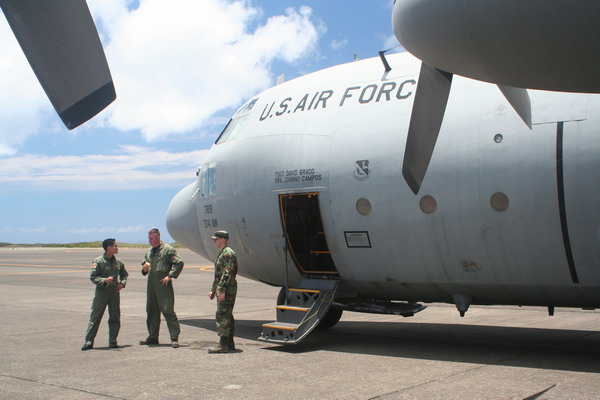
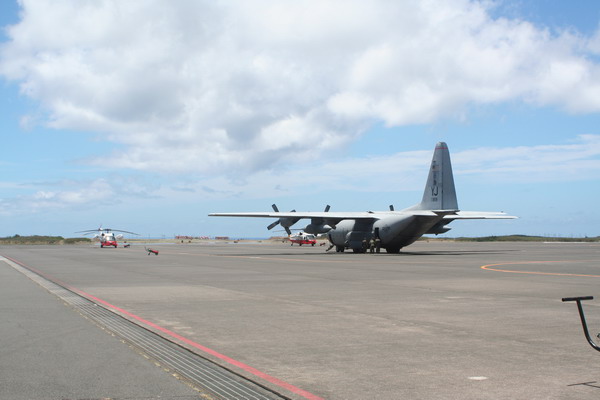
Here’s the inside. As you can see, it’s not quite as comfortable as a civilian airliner, and a whole lot louder. It sure can get into some remote places though!
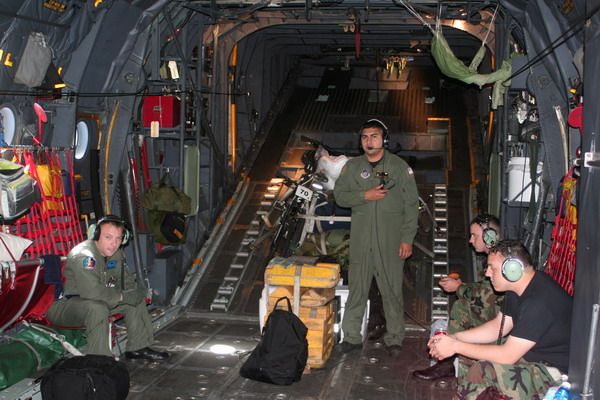
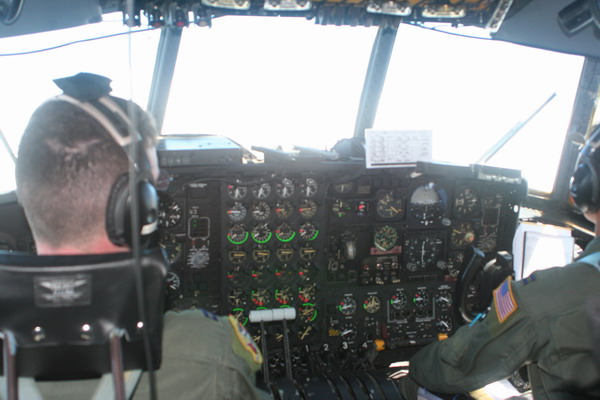
While we were only on the ground for a few hours, we were able to see much of the island by using a minibus to drive us around. About the only people on the island these days are the 200 or so Japanese Maritime Self-Defense Force. So, it is an interesting turn of fate that we had a Japanese and an American Marine (who flew out with us from Guam) to guide us through the historical significance of the island where so many people had died on just 6 decades before.
This is the dirt road that leads to the infamous Mt Suribachi.
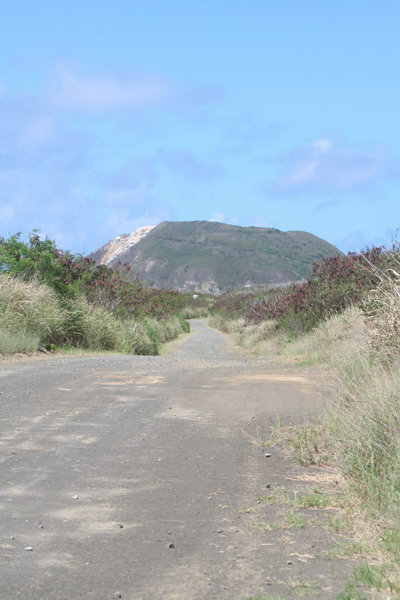
Here you can see on of the well entrenched bunkers that lined the shore where the Marines landed in February 1945.
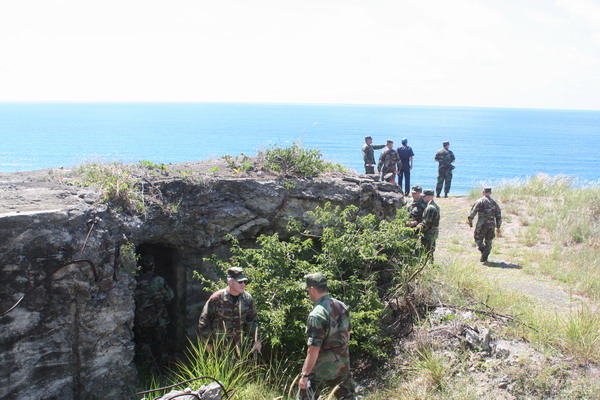
Here I am on the inside of that bunker (or pillbox).
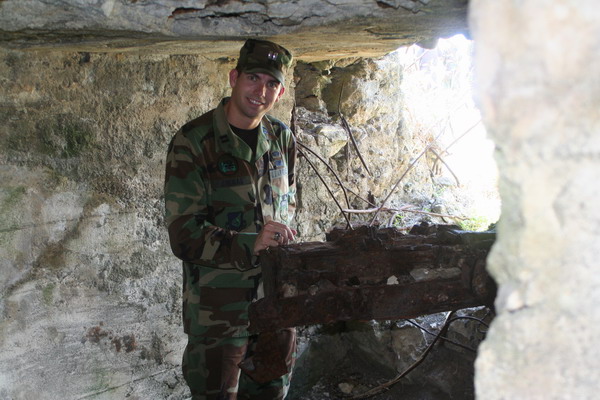
The Commander and Command Chief Master Sergeant.
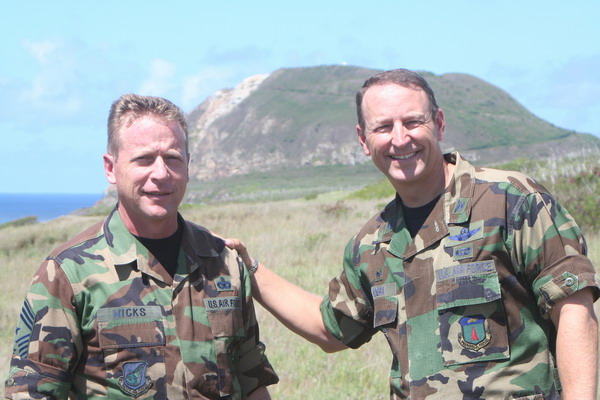
This is our group of Air Force people who attended.
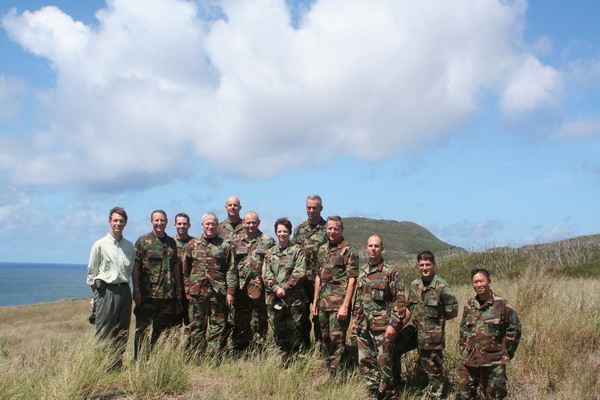
This monument is was dedicated when both Japanese and American soldiers met at this spot. This time it was under the banner of peace and friendship.
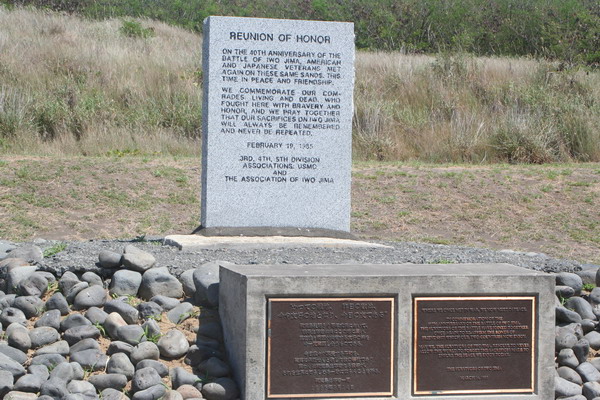
This map shows how the island looked during WWII and where the Marine units involved went. To orient you, Mt Suribachi is in the lower left hand corner (on the southernmost end of the island).
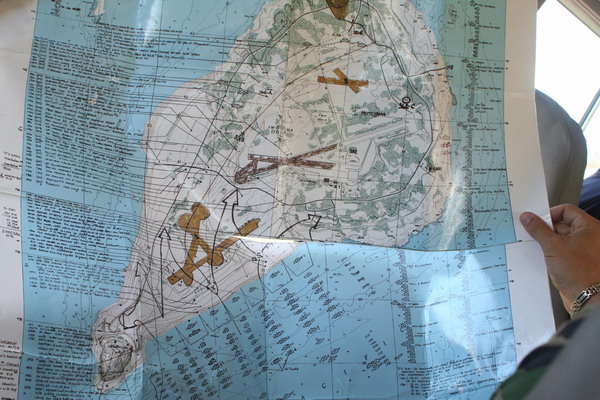
This is the invasion beach. You can see it’s a black volcanic beach. The sand is coarse and it’s very easy to imagine how hard it was to land all those men and equipment.
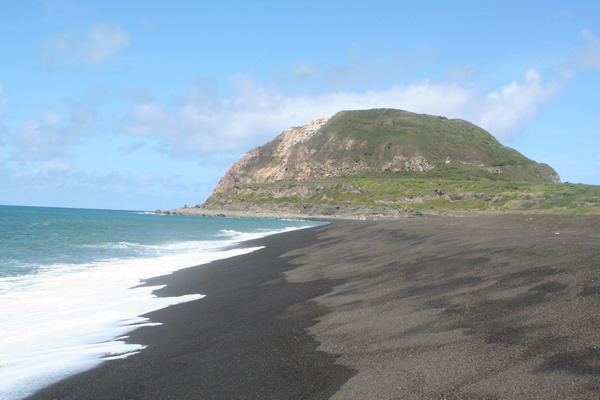
This rock marks the midway point on the beach and divided where the regiments came ashore.
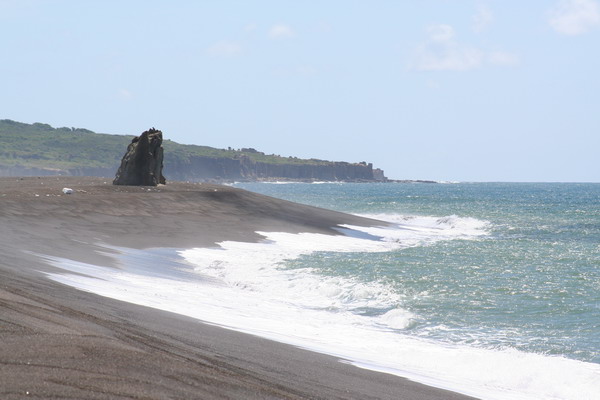
This is our Marine guide, Matt, recounting what happened 61 years ago.
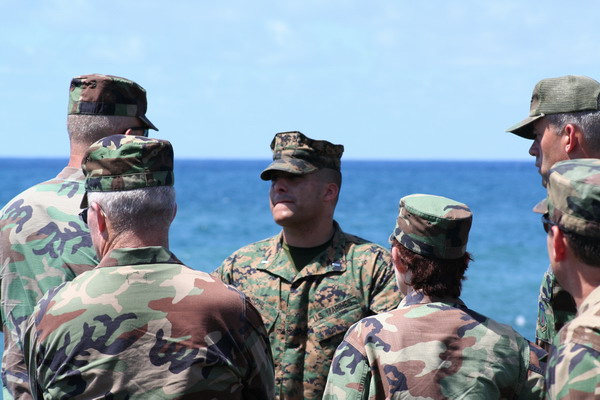
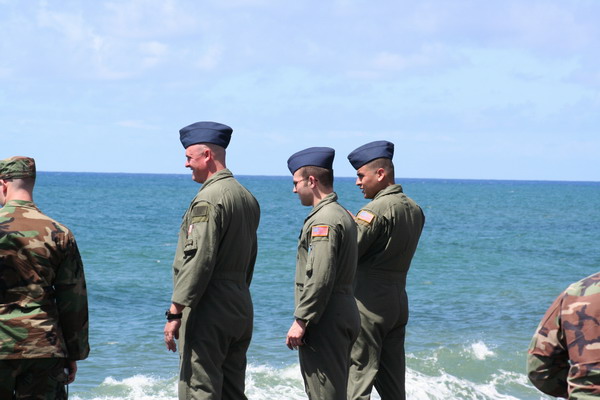
During the war, everything the Japanese defenders did was underground. This included their hospital. Almost a month after the island was declared captured, American forces discovered an underground field hospital. It contained 72 Japanese soldiers and medical personnel. 71 of them surrendered (one committeed suicide).
Here is the entrance to that hospital cave:
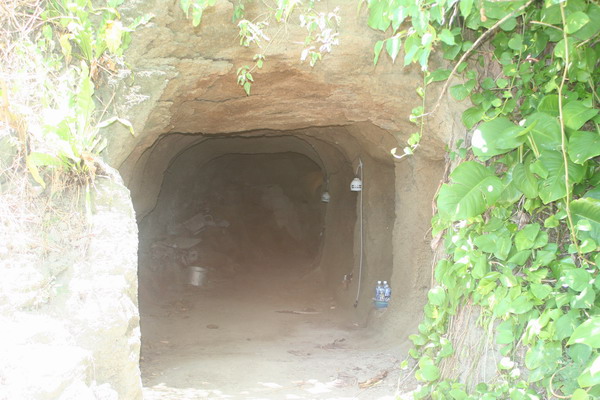
There were a number of artifacts that remained in the cave.
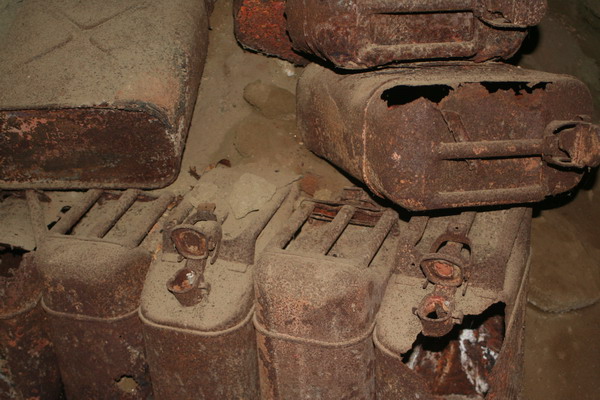
Inside the cave, there were a number of air vents that provided fresh air. That was especially important if one of the entrances were destroyed or blocked.
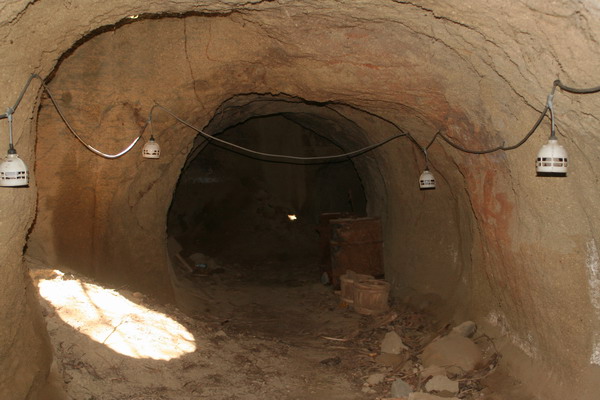
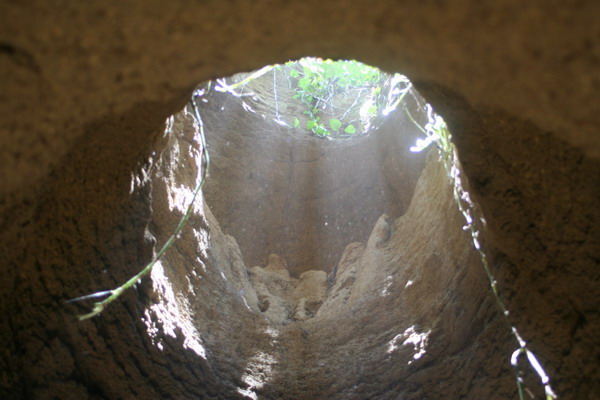
One aspect of the cave that the pictures don’t convey is just how hot it was inside. One would expect that it would be much cooler underground. However, since the island is an active volcano, going underground only brings you closer to the steam and magma. So, in places it was easily over 100 degrees. This picture shows the mass of hot air rising from the cave into the cooler air above and outside.
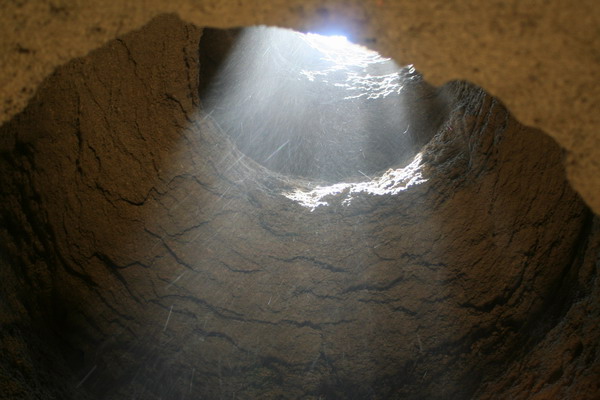
Nearby the hospital cave, there is a sandstone monument carved into the cliff. This carving of the famous flag raising on Mt Suribachi was done by Waldon Rich in July 1945 (only 5 months after the actual raising).
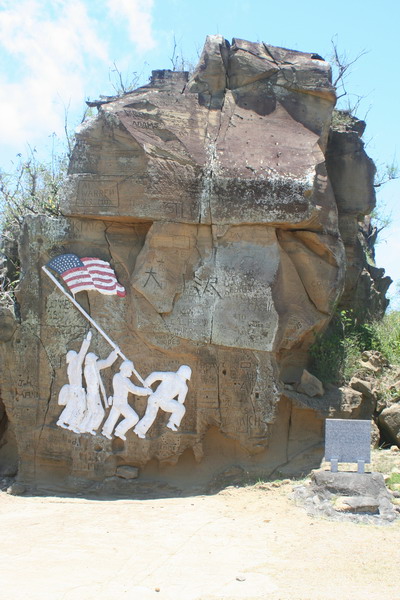
In the next part, I will include the pictures from the top of Mt Suribachi.
–Jim
1 thought on “Iwo Jima: 61 years later (2006)–Part 1”
Comments are closed.

Jim,
I had a great time taking you and your Col’s on a tour of Iwo Jima. I thought it was a great idea for our fellow Military Brotheren to take a look at some US Marine Corps History.